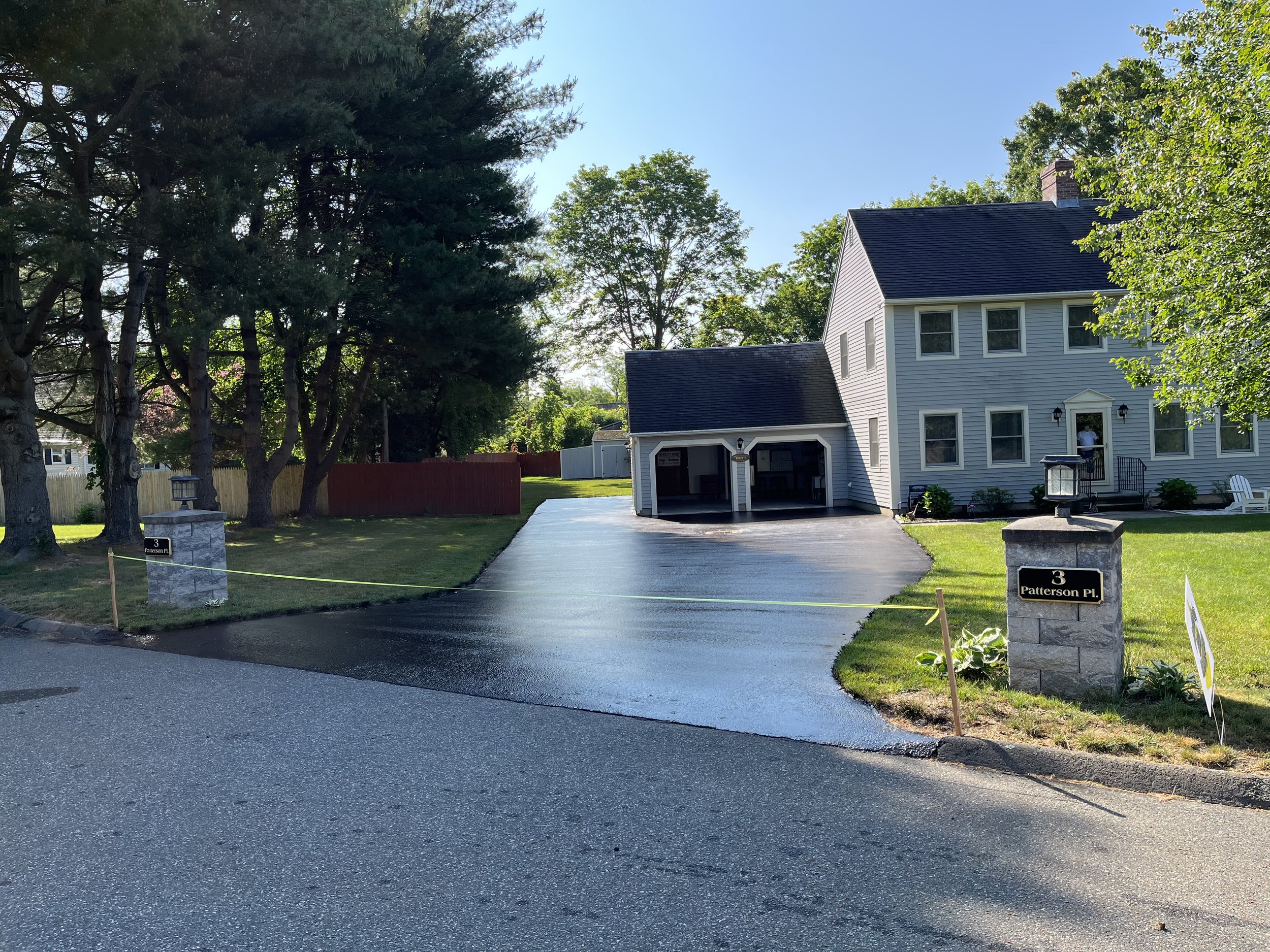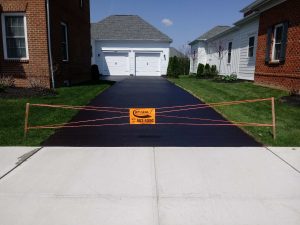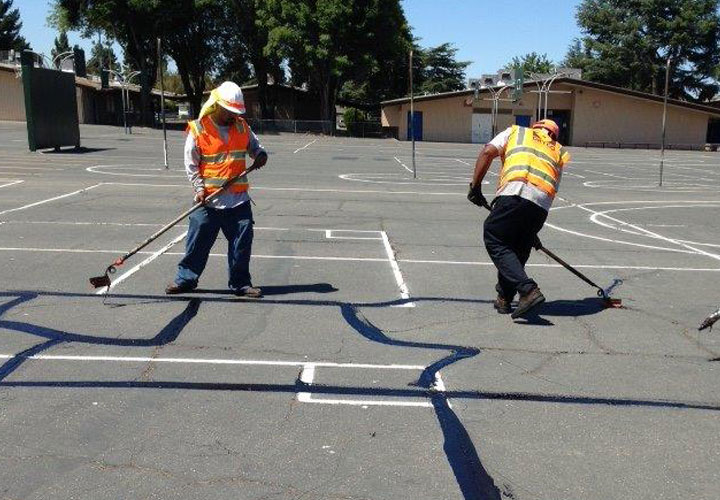Discover the Power of Commercial Parking Area Paving and Asphalt Sealing
Discover the Power of Commercial Parking Area Paving and Asphalt Sealing
Blog Article
Hot Mix Asphalt: A Sustainable Service for Pavement
Hot Mix Asphalt (HMA) has become a leading sustainable choice for sidewalk remedies, supplying a myriad of ecological advantages and ingenious innovations. Its capacity to decrease and recycle products power usage presents a compelling instance for its fostering in road construction tasks. In addition, the lasting performance and toughness of HMA make it a favored choice for infrastructure growth. As the demand for environmentally friendly construction techniques grows, exploring the subtleties of HMA's sustainability can offer valuable understandings into the future of sidewalk services.
Ecological Benefits of Hot Mix Asphalt

Additionally, Warm Mix Asphalt helps to reduce urban heat island effects. Its dark color soaks up sunlight, lowering the amount of warmth reflected back right into the ambience compared to lighter-colored sidewalks. This can decrease ambient temperatures in metropolitan locations, reducing the need for air conditioning and eventually lowering energy usage.
Furthermore, Warm Mix Asphalt adds to improved stormwater administration. Its permeable nature permits water to recharge and infiltrate the pavement groundwater supplies, minimizing overflow and the threat of flooding. These ecological advantages make Warm Mix Asphalt a lasting selection for leading freeways and roadways.
Power Effectiveness in HMA Manufacturing
Is energy performance a critical variable in the manufacturing of Hot Mix Asphalt (HMA)? Power plays a substantial function in the production of HMA, influencing both expense and environmental sustainability. One vital element of energy performance in HMA production is the use of cozy mix asphalt (WMA) modern technologies.
Moreover, developments in plant technologies have actually led to even more energy-efficient HMA production procedures. Modern plants are developed with attributes like recycled asphalt pavement (RAP) handling abilities, reliable heater systems, and enhanced insulation, all adding to energy savings. By enhancing power usage in HMA manufacturing, the industry can lower its carbon footprint while keeping top quality sidewalk materials. Power performance is, as a result, a crucial factor to consider in ensuring the sustainability of Hot Mix Asphalt manufacturing.
Recyclability of Hot Mix Asphalt
The recyclability of Hot Mix Asphalt (HMA) is an essential facet of its sustainability and long-term environmental effect. HMA is just one of the most recycled materials in the United States, with over 100 million lots of reclaimed asphalt pavement (RAP) being reused every year in brand-new sidewalk construction. Recycling HMA supplies numerous ecological advantages, such as reducing the requirement for virgin materials, reducing power intake throughout manufacturing, and lowering the quantity of waste sent out to landfills.
The process of recycling HMA involves milling the existing pavement, crushing it into smaller items, and blending it with brand-new accumulation and asphalt binder to develop a recycled mix. This recycled mix can often perform as well as or perhaps better than conventional HMA, while requiring fewer resources and generating reduced greenhouse gas exhausts. By including RAP right into new pavement projects, road firms can preserve natural deposits, minimize expenses, and reduce the ecological footprint of roadway building and construction and upkeep tasks. Generally, the recyclability of HMA plays a considerable function in promoting lasting techniques within the pavement industry.

Long-Term Efficiency of HMA
Asphalt sidewalks show longevity and resilience over an extended period, reflecting the long-term performance of Warm Mix Asphalt (HMA) The long life of HMA can be connected to its capacity to hold up against heavy web traffic loads, harsh climate condition, and the impacts of aging. Studies have actually revealed that properly designed and effectively created HMA sidewalks can last for 20 years or more with normal upkeep. The secret to maximizing the long-term efficiency of HMA hinges on utilizing premium materials, following ideal techniques in building, and executing effective upkeep approaches. Appropriate drain, routine examinations, and prompt repair work are essential for maintaining the architectural integrity of HMA sidewalks gradually. Furthermore, advancements in HMA modern technology, such as using polymer-modified binders and warm mix asphalt, have actually even more enhanced the toughness and durability of HMA sidewalks. By prioritizing quality building and construction and maintenance techniques, HMA continues to prove itself as a cost-efficient and sustainable remedy for lasting sidewalk facilities.

HMA: Toughness and Sustainability
Demonstrating both durability and sustainability, Warm Mix Asphalt (HMA) has come to be a foundation in the construction of resilient pavement facilities - angled parking. HMA's longevity comes from its capacity to endure hefty loads, rough weather, and high traffic volumes, making it a reliable option for highways, highways, and flight terminal paths. The structure of HMA, which commonly includes aggregates, binder, and filler, plays a critical role in improving its long life and resistance to tear and use
In addition, HMA's sustainability hinges on its recyclability and energy-efficient production procedure. The capacity to reuse recovered asphalt sidewalk (RAP) in brand-new Homepage HMA mixtures decreases the demand for virgin products and decreases the environmental effect of sidewalk building and construction and maintenance. Additionally, the energy effectiveness of generating HMA depends on its lower mixing temperatures compared to other pavement products, causing lowered power consumption and greenhouse gas emissions.
Conclusion
In final thought, hot mix asphalt (HMA) offers a sustainable service for pavement with its eco pleasant qualities. HMA's recyclability, energy efficiency in manufacturing, and long-lasting sturdiness make it an environmentally friendly choice for roadway building.
HMA is one of the most recycled materials in the United States, with over 100 million bunches of recovered asphalt pavement (RAP) being recycled yearly in brand-new pavement building and construction.The process of reusing HMA includes milling the existing sidewalk, crushing it right into smaller pieces, and blending it with new accumulation and asphalt binder to produce a recycled mix.Asphalt sidewalks demonstrate durability and durability over an extended duration, mirroring the long-lasting efficiency of Hot Mix Asphalt (HMA) In addition, developments in HMA modern technology, such as the use of polymer-modified binders and cozy see here mix asphalt, have additionally enhanced the sturdiness and long life of HMA pavements. The capacity to reuse recovered asphalt sidewalk (RAP) in new HMA combinations decreases the need for virgin products and reduces the ecological impact index of pavement building and construction and maintenance.
Report this page